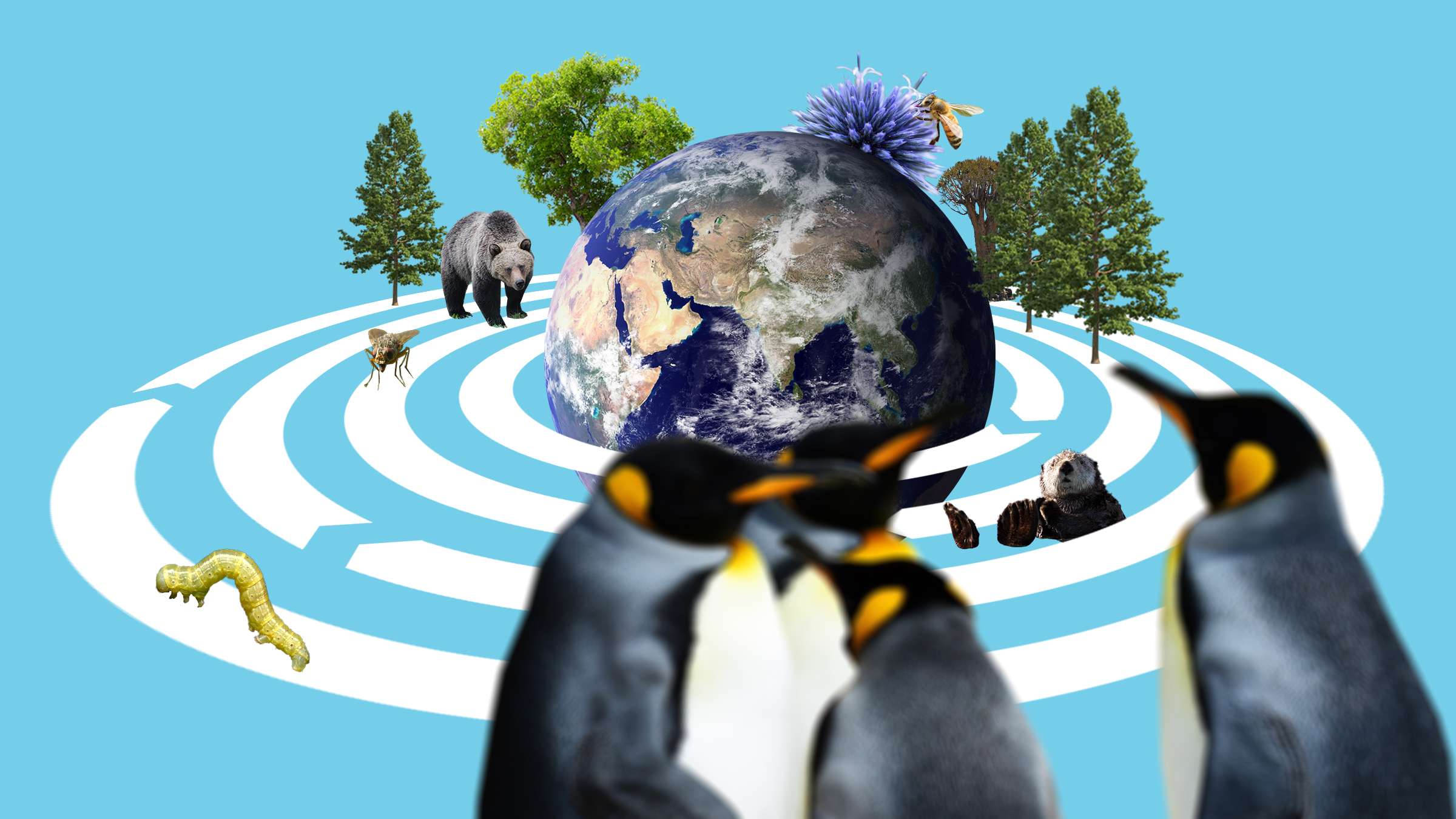Nature is in retreat across the world. As many as one million species are threatened with extinction. As none of the targets for the last decade under the UN Convention on Biodiversity have been fully achieved, action is urgently needed if we are to reverse the trend.
The Dasgupta Review, an independent report on the economics of biodiversity commissioned by the UK Treasury, argues that nature is our most precious asset and that significant declines in biodiversity are undermining the productivity, resilience and adaptability of nature. This in turn has put our economies, livelihoods and well-being at risk.
It is not just many species that are at risk, but also many of the ecosystem services that sustain us, like climate control, the provision of food, genetic resources for pharmaceuticals and biotechnology.
More than half of global GDP is dependent on nature, according to an estimate by the World Economy Forum. Beyond renewed resolve, we will need to think differently.
Ninety per cent of biodiversity loss is caused by the way we extract and process materials, fuels and food in what is fundamentally a linear economy. We designed that economy. The good news is that we can also redesign it, and the circular economy The circular economy An economic model which does not focus on producing more and more goods, but in which consumption is based on using services – sharing, renting and recycling – instead of owning. Materials are not destroyed in the end, but are used to make new products over and over again. Open term page The circular economy provides some of the most effective tools, by tackling the root causes of biodiversity loss and getting more value from what we have, through action in five key areas as listed by the Convention on Biological Diversity (CBD):
- more sustainable production of goods and services, especially food;
- reduced consumption and waste;
- action on pollution, invasive alien species and overexploitation;
- climate change mitigation;
- enhanced conservation and restoration of ecosystems.
More sustainable production of goods and services, especially food
Production spans many industries. However, land-use change has become the single largest driver of biodiversity loss, and approximately 85 per cent of this land-use-related biodiversity loss is due to the cultivation and processing of biomass, including wood, food and biofuels.
Globally, according to the International Resource Panel, food is the main sector driving global biodiversity loss, and animal-based products have the largest impact. Estimates vary, but as much as 80 per cent of cultivated land is used to feed livestock. Forests are being cleared to create more agricultural land to feed more livestock. Our food system needs to change.
Many alternatives to animal-based products – which could, according to the WEF, create 30 million jobs by 2030 – already exist and there is enormous growth potential globally. Finnish examples include pulled oats, Vöner’s kebab substitute and emerging solutions such as egg protein from cellular agriculture and Solar Food’s air-based protein powder. These increasingly competitive solutions will continue to transform the food industry.
How we produce food also matters, as nearly a quarter of the world’s surface suffers from lower productivity as a result of land degradation. Regenerative agriculture, which can help tackle climate change and rebuild – rather than deplete – both soils and local biodiversity, could also help create 62 million jobs in the sector by 2030.
Reduced consumption and waste
Today’s economy is extremely wasteful, and by one estimate made by Circle Economy, our world is only 8.6 per cent circular. Waste is largely a design flaw, which means that it is possible to make much better use of what we already have. Moreover, by shifting to a planet-compatible consumption in the food, land and ocean-use system, an additional 70 million jobs could be created by 2030.
Twenty-eight per cent of the world’s fields are used to produce food that is wasted or lost, according to FAO. We need to tackle loss at all levels, from the fields, production sites, in stores, restaurants and consumers. Two solutions are the Finnish app ResQ, which connects users with leftovers from restaurants and grocery stores, and the UK-based company Winnow, which uses digitalisation to help chefs measure, monitor and design out waste.
Much waste also results from throwing away things all too soon; business models that help things remain in use are key. The demand for land to cultivate and process fibres has grown ever larger globally, but Finnish pioneer Lindström, for example, makes workwear last longer by offering the workwear as a service. Shifting towards producer ownership was identified as an important action in Finland’s strategic national circular economy programme, published in January.
Climate change mitigation
Climate change already accounts for 11 to 16 per cent of biodiversity loss – a percentage only expected to increase. In some ecosystems, it is already the main driver of biodiversity loss.
The circular economy is increasingly seen as a powerful force for climate mitigation. In 2018, Sitra and its partners demonstrated that making better use of four materials could take EU industry halfway towards net zero. For example, by reusing steel and aluminium, significant savings can be made. The same can be said of cutting food waste and shifting to new diets, as well as of renovating and retrofitting our existing building stock and optimising how we use that space.
While climate action supports biodiversity action, biodiversity action can also support climate action. Our ecosystems on land and under water are the sole sinks for our greenhouse gas emissions, 60 per cent of which they could store every year. The health of these ecosystems influences their capacity to effectively store carbon. A virtuous cycle is possible. This cycle can be catalysed by the circular economy.
Action on pollution, invasive species and overexploitation
Pollution takes many shapes – from toxins and microplastics, to acidification and eutrophication – and is one of the biggest threats to global biodiversity. These different forms of pollution result from different sources in the linear economy, while many of the solutions can be found in the circular economy. The same can be said of invasive species – from lupins to Asian carp – which are mainly the result of habitat degradation, human mobility, climate change and trade. Adding fuel to the fire, one can reinforce the other; plastic pollution can increase the problem with invasive species, as some species of fish, mussels and anemones follow ocean plastics as they travel across oceans.
The problems may be interlinked, but so are the solutions. Eighty per cent of the environmental impact of products is determined at the design phase. By tackling problems at the source, before the damage is done, pollution, invasive species and overexploitation – as well as climate change – can be addressed jointly. Making better use of what we already have is also key. One of Sitra’s pilot projects sought to increase the use of underused fish like roach as an alternative to overexploited fish stocks.
Thirty per cent of threats to global species come from international trade, for example by driving exploitation, through climate change and by being responsible for introducing new invasive species. However, a long-term metamorphosis into a more service-oriented trade system has begun. The circular economy is at the helm of this shift.
Just as design and optimal usage can help tackle different drivers of biodiversity loss by slowing the material throughput, new as-a-service solutions based on rethinking the concept of ownership can similarly tackle pollution, exploitation, invasive species and other drivers.
Conservation and restoration
Minimising our resource demand and changing production practices through the circular economy will be crucial. However, a recent article in Nature has shown that it will only be possible to halt biodiversity loss in the next few years if these measures take place in tandem with conservation efforts, in line with the ideas of Walter Stahel, one of the key thinkers of the circular economy, who highlights the importance of intelligent stock management.
Today, only 15 per cent of the world’s land area and 11 per cent of territorial waters are protected, in contrast to calls to protect 30 per cent of all land and oceans by 2030. On 11 January this year, a coalition of 50 countries committed to this target.
Beyond avoiding and reducing negative impacts, the circular economy can also actively restore and regenerate natural systems. According to one estimate, restoring 15 per cent of land in priority areas could prevent 60 per cent of the expected cases of extinctions, while setting aside 5 per cent as marine protected areas – counter-intuitively giving us more from less by letting stocks regenerate – could help increase the fish catch by 20 per cent.
However, only so much can be restored, as a species lost will forever be a species lost. We can increase biodiversity locally, in a confined area, by bringing in species from outside, but we can never increase total global biodiversity. Therefore, in line with the AR3T Action Framework presented in the initial guidance on science-based targets (SBTs) for nature, actions to avoid and reduce the impact on natural systems should take precedence over regenerative practices.
Complex systems require systemic solutions
The five areas are highly interconnected. Action in one area spills over into the next. And the next. For example, solutions that help design out food waste can help reduce the need for expanding agricultural land, reducing the destruction of pristine forests, as well reducing both climate change and eutrophication from fields.
By extension, by tackling climate change, we can both prevent the introduction of more invasive species and slow down ocean acidification, factors that have a bearing on already largely overexploited fish stocks. Therefore, all actions are needed. However, those solutions that help reduce our damaging reliance on resources – especially in the food system – may have the most powerful impacts.
Today’s economy is one of haste and waste. It is out of balance with nature. We designed that economy. We can also redesign it.



















Recommended
Have some more.